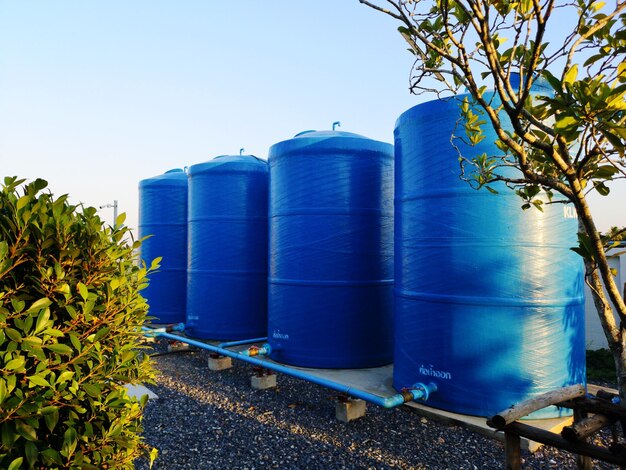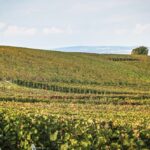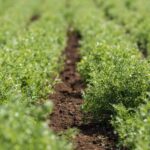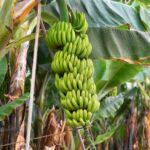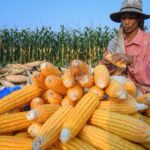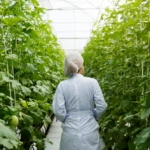Water is one of the most vital resources in agriculture, and its management plays a critical role in the success and sustainability of farming operations. In South Africa, where much of the country experiences water scarcity and seasonal droughts, efficient water management is not just important—it is essential. Effective water management practices are necessary to ensure the long-term viability of farming, optimize crop yields, and conserve this precious resource for future generations.
1. South Africa’s Water Challenges
South Africa is one of the driest countries in the world, with large parts of the country classified as arid or semi-arid. The country experiences erratic rainfall patterns, frequent droughts, and increasing water demand due to population growth, urbanization, and industrialization. Agriculture is a major water user in the country, accounting for approximately 60-70% of the total water consumption. As climate change accelerates, the availability of water is expected to decrease, making it even more important to adopt sustainable water management practices in farming.
2. Maximizing Crop Yields Through Efficient Water Use
Water management is directly linked to crop productivity. Proper irrigation systems and techniques are essential to ensure that crops receive the right amount of water at the right time. Over-irrigation can lead to water wastage, soil erosion, and salinization, while under-irrigation can cause drought stress, reduced yields, and crop failure.
- Drip irrigation: This highly efficient system delivers water directly to the plant roots, minimizing water loss due to evaporation or runoff. Drip irrigation is particularly useful in water-scarce areas, as it allows for precise control over water distribution.
- Sprinkler irrigation: Sprinklers are another effective way to irrigate crops, especially in areas with uneven terrain. However, they tend to lose water through evaporation and wind drift, making them less efficient than drip irrigation in dry conditions.
- Surface irrigation: In some cases, flood irrigation may still be used for certain crops, but this method is less efficient in terms of water use and can lead to soil erosion and waterlogging.
By selecting the right irrigation system and scheduling water use based on crop needs, farmers can maximize water efficiency, reduce waste, and boost overall productivity.
3. Soil Health and Water Retention
Healthy soil is essential for good water retention. Soil with adequate organic matter can absorb and retain more water, reducing the need for frequent irrigation. In areas with sandy or compacted soils, water tends to drain quickly, leaving crops vulnerable to drought stress. By improving soil health through practices such as mulching, adding organic matter, and practicing conservation tillage, farmers can improve the soil’s water-holding capacity.
- Mulching: Mulch helps to retain moisture in the soil, reduce evaporation, and suppress weed growth. Organic mulches, such as straw or compost, also add nutrients to the soil.
- Cover cropping: Planting cover crops can prevent soil erosion, improve soil structure, and increase the organic matter content, all of which help improve water retention.
- Conservation tillage: Minimal tillage preserves the soil structure, reduces compaction, and enhances the ability of the soil to hold moisture.
By focusing on improving soil health, farmers can reduce water usage and enhance their crops’ resilience to water stress.
4. Water Harvesting and Storage
In regions with limited rainfall, water harvesting is an increasingly important strategy. By capturing and storing rainwater during wet periods, farmers can create reserves that can be used during drier months. Techniques for water harvesting include:
- Rainwater tanks: Collecting rainwater from roofs and storing it in tanks is an effective way to capture water for irrigation and livestock use.
- Dams and reservoirs: Larger-scale water storage systems can store water for agricultural use, especially in areas with seasonal rainfall.
- Check dams and weirs: These structures slow down water flow, allowing for the capture and storage of water in smaller streams and rivers, improving water availability during dry periods.
Water harvesting can help mitigate the effects of drought and reduce dependency on municipal or surface water sources.
5. Monitoring and Managing Water Usage
Water usage must be carefully monitored to ensure efficiency and sustainability. Modern technology offers farmers several tools to track water use and optimize irrigation schedules.
- Soil moisture sensors: These sensors provide real-time data on soil moisture levels, helping farmers determine when and how much water to apply.
- Weather stations: Localized weather data can help predict rainfall, temperature, and humidity, allowing farmers to adjust irrigation schedules accordingly.
- Remote sensing technology: Drones and satellite imagery can be used to monitor crop health and identify areas with insufficient water or irrigation problems.
By using these technologies, farmers can make data-driven decisions, ensuring that water is used where it is most needed and reducing the risk of water wastage.
6. Sustainable Water Management Practices
Sustainable water management is key to ensuring that agricultural practices do not deplete water resources. Farmers should strive to balance water use with conservation efforts, protecting both the environment and the long-term productivity of their land.
- Water recycling: Reusing water from irrigation systems, livestock operations, or even wastewater treatment can reduce the overall demand for fresh water.
- Efficient crop selection: Choosing crops that are drought-resistant or require less water can help reduce overall water use. For example, farmers may consider planting native or indigenous crops that are better suited to the local climate.
- Water-efficient technologies: Implementing technologies that reduce water loss, such as low-pressure irrigation systems, moisture sensors, and automated systems, can significantly improve water efficiency.
7. The Role of Government and Policy in Water Management
Effective water management in South African agriculture requires collaboration between farmers, government, and other stakeholders. The government plays a vital role in regulating water usage, providing financial incentives for water-saving technologies, and ensuring equitable access to water resources.
- Water licensing and regulations: Farmers must adhere to water licensing regulations and quotas to ensure fair distribution of water resources. The government also supports initiatives that promote efficient water use.
- Training and support: Providing farmers with education and resources on efficient water management techniques can increase adoption of sustainable practices.
Water management is one of the most important aspects of modern farming in South Africa. Given the country’s water scarcity and unpredictable rainfall, efficient water use is essential for ensuring food security, increasing crop yields, and promoting sustainable farming practices. By adopting efficient irrigation systems, improving soil health, harvesting rainwater, and using technology to monitor water usage, South African farmers can conserve water while improving their productivity. With responsible water management, agriculture in South Africa can thrive even in the face of challenging environmental conditions.


